Do-it-yourself site drainage: detailed instructions
Drainage in the summer cottage is necessary, as this system protects the house from excessive moisture. In the article we will tell you how to properly drain, as well as show photo and video instructions for draining areas.
In what cases is it necessary
To get rid of excess moisture in the summer cottage, in order to divert water, it is necessary to drain the territory by laying drainage systems for this. The vegetation will no longer be annoyed by swamps, puddles will not linger on the droshky and paths, there will only be time for a pleasant activity in growing your own garden and relaxing with family or friends in the bosom of nature.
Drainage systems are necessary in summer cottages if the following troubles arise:
- Soil swelling. With this serious problem, expanded and swollen soil destroys tiled walkways and squeezes out a pool set at a certain depth in the ground. In addition, with strong ground pressure, cracks can form in the load-bearing walls of buildings, as well as distortions of window and door openings.
- Soil washing out. With a heavy downpour, openings under the canvas of paths and grooves in the garden in places of uneven and loose earthen surface occur.
- Waterlogging of land. Clay soil does not absorb water well, which leads to its stagnation, the formation of puddles and dirt. All this negatively affects the vegetation, visually depresses the owners of the dacha, and can even affect their well-being.
- Underflooring of basements and low cellars. Excess moisture promotes the development and reproduction of fungi and mold. This leads to the destruction of such premises, and the fruits and vegetables in them quickly deteriorate.
Additional factors
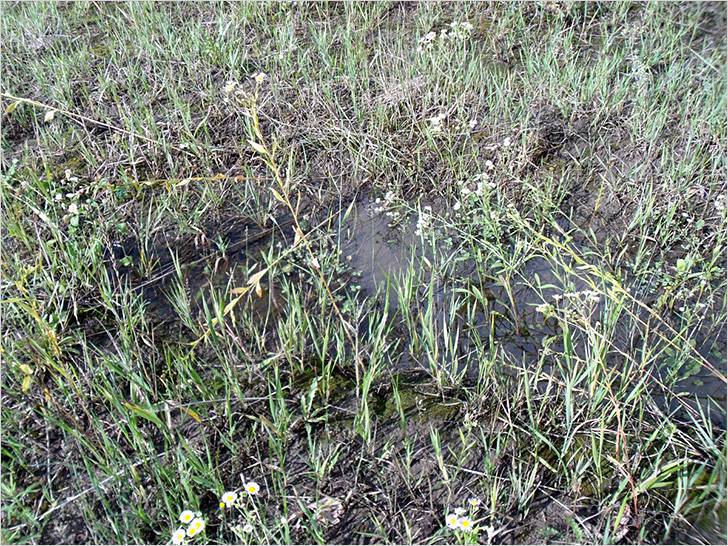
The need to remove excess water from the summer cottage to a large extent depends on the level of groundwater. When this figure reaches - 2.50 m, this indicates the desired arrangement of the drainage system, but if it is equal to - 1.50 m, it is simply necessary to equip the drainage. In addition, drainage is recommended if:
- the cottage with the adjacent territory is located on a hilly slope or under it;
- a plot with summer cottages is located in a lowland;
- the soil around the cottage has a clay structure and does not filter water well.
Kinds
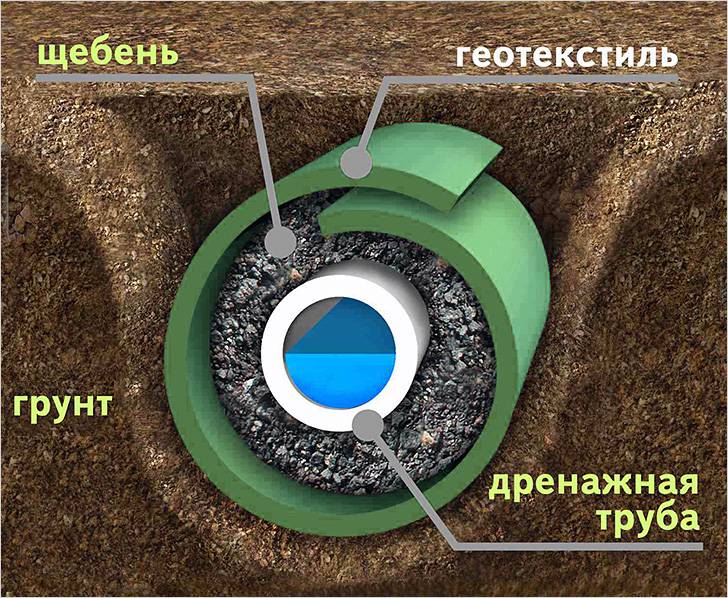
Deep type drainage system
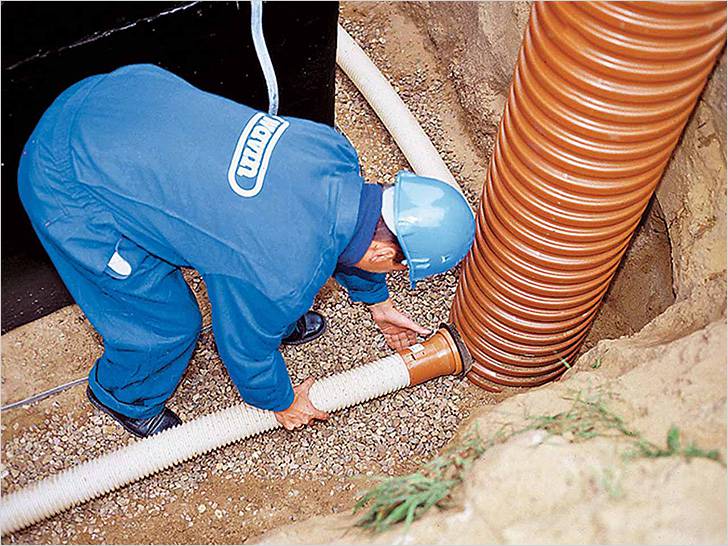
Such a system is most effective if groundwater is close to the surface. It is used to protect basements from flooding with the same groundwater during heavy rains and to remove excess moisture from the territory.
Note! It is recommended to equip a drainage system on land areas for a garden and a vegetable garden if the soil is clayey.
Surface type drainage system
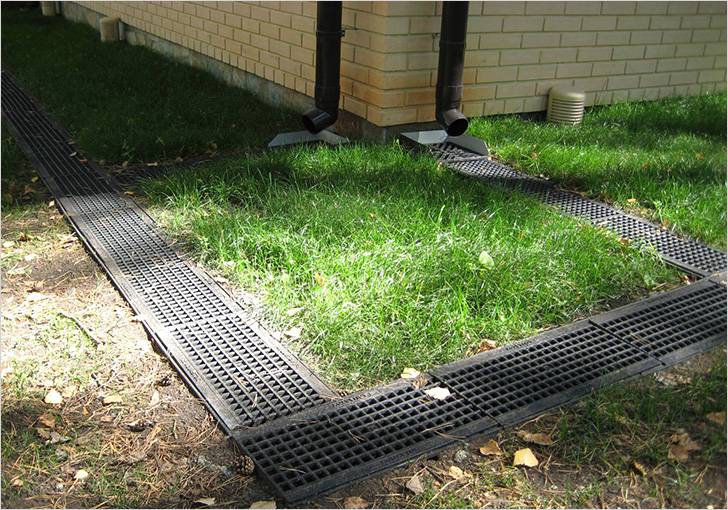
Such a system is a drainage of surface wastewater through a storm sewer and has 2 subspecies:
Drainage point, which consists of a water intake, where water is collected from the pipes of the gutters of the roof of the building. Thanks to such a water intake, which, in fact, is a well with a siphon, it prevents the release of water resulting from precipitation into the area near the house, followed by the formation of puddles and dirt. Siphon with a special grid that prevents dirt from entering the container, prevents the appearance of unpleasant odors. To facilitate the cleaning of the drainage from clogging, the receiving compartment of the siphon is equipped with a basket; Linear drainage system that collects water from a place of its concentration using inclined trays. Under such trays, trenches are dug, followed by gravel falling asleep in them. The system operates in a wide range throughout the entire territory of the suburban area. Linear drainage is a gravity sewer, since the condition for its creation is the necessary slope of the terrain, which must be at least 3º.What type of drainage system is most appropriate in a particular situation can be found out from geological survey data and geodetic surveys made by geologists and surveyors. Such services can be ordered from the relevant organizations.

First you need to dig a trench, fill it with branches and improvised materials that will create a natural filter, and cover it all with earth. It will turn out not bad, cheap and cheerful, but, unfortunately, short-lived.
Works on the equipment of deep drainage pass the following stages:
- Geodetic work. To do this, you need to purchase a rangefinder (preferably a laser), a classic level and a geodesic rail. With the help of these devices it will be possible to determine the mark of the pickets on the ground and the distance between them.
- Earthworks to create trenches for laying drainage porous pipes. The trench should be 1 m (depth) x 0.4 m (width). The horizontal slope should be 0.03, increasing to 0.04 towards the bottom of the drain.
- The bottom of the trench is filled with compacted sand 0.1 m thick.
- A geotextile sheet is laid on the compacted sand with the edges on the side of the trench.
- A 20-centimeter layer of crushed stone is laid on top of the canvas.
- Drainage pipes are laid on the rubble with holes down.
- Repeated backfilling with rubble.
- A cloth that will hold grains of soil is wrapped around a pipe with crushed stone.
- The top of the trench is covered with a roll of turf.
- At the final stage, a water intake well is installed at the lowest point of the drainage network, the water from which will be discharged into a storm sewer, ravine or reservoir.
Note! You can check the quality of the work of deep drainage visually during heavy rain.
Surface drainage device
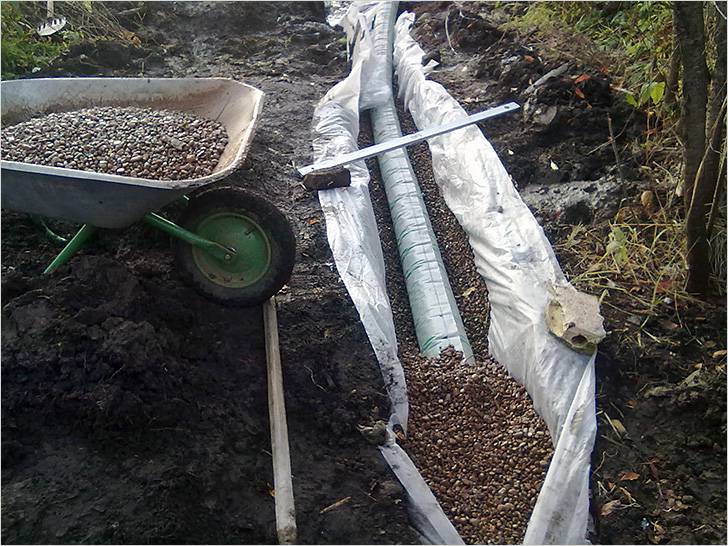
The manufacture of this type is much simpler than the above. In this case, you do not need to dig trenches. Soil drainage can be carried out using a tray or backfill system. Work also begins as standard:
- Geodetic processing of the area is carried out. A drawing of the location of the ditches is drawn. Future trenches on paper cover the entire perimeter of the garden plot. From places of maximum accumulation of water, additional threads are carried out;
- Dig trenches 0.7 m (depth) × 0.5 m (width). The main lines are dug with a slope to the well, and the side lines - to the main threads;
- The walls of the trench should have a slope according to the type of soil at the base and should be approximately 30º.
With the filling method, crushed stone is placed in the ditches at 66% of their depth, and 34% in height is occupied by the same crushed stone, but of a smaller fraction. Just as with the deep method, you can apply a geotextile. The top of the structure is covered with a layer of turf.
With another method, you need to purchase ready-made trays that will serve as a drain for storm and drainage drains. They are made mainly from concrete or plastic, as well as from a material made with the addition of a polymer. To create a tray drainage system, the following work is performed:
- sand 0.1 m thick is laid in dug ditches, after which it is compacted;
- trays and sand traps are placed on the sand, which are plastic parts that hold back sand and dusty fractions;
- trays are covered with gratings to protect them from all sorts of debris and make the design more attractive.
Depending on the situation, you can limit yourself to drainage around the perimeter of the house, or you can dig trenches to improve landscape design. Having rid the area of destructive excess moisture, the cottage will be the place where you can always have a good rest.
Video
In this video, a specialist in the field of drainage systems will talk about how to properly perform such work:



